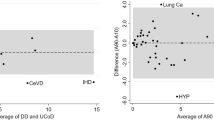Abstract
A study is made of the effects of associated causes of death, and of dependency among causes of death, by observing the relative importance of one cause of death when another is eliminated under various competing risk models. Two disease pairs, cancer and infectious disease and stroke and ischemic heart disease, are selected for analysis because they represent different types of disease dependence. Crude probabilities of death for each disease are calculated for the U.S. white male population in 1969. Next, the effects of the complementary disease in a pair are hypothetically eliminated in one of three ways: (a) a standard competing risk adjustment for cause elimination when deaths are singly caused (Chiang, 1968), (b) lethal defect-pattern of failure computations for multiply caused death when no causal order is inferred (Manton et al., 1976), and (c) relative susceptibility computations for multiply caused deaths when causes are ordered (Wong, 1977). The paper closes with a discussion of the relative merits of the three types of adjustments.
Similar content being viewed by others
References
Chiang, C. L. 1968. Introduction to Stochastic Process in Biostatistics. New York: Wiley.
David, H. A. 1974. Parametric Approaches to the Theory of Competing Risks. Pp. 275–290 in F. Proschan and R. J. Serfling (eds.) Reliability and Biometry. Philadelphia: S.I.A.M.
Gail, M. 1975. A Review and Critique of Some Models Used in Competing Risk Analysis. Biometrics 31:209–222.
Grizzle, J. E., C. K. Starmer, and G. G. Koch. 1969. Analysis of Categorical Data by Linear Models. Biometrics 25:489–504.
Hersh, E. M., G. P. Bodey, B. A. Nies, and E. J. Freireich. 1965. Causes of Death in Acute Leukemia-A Ten Year Study of 414 Patients from 1954-1963. Journal of the American Medical Association 193:105–109.
Inagaki, J., V. Rodriquez, and G. P. Bodey. 1974. Causes of Death in Cancer Patients. Cancer 33:568–573.
Lee, L., and W. A. Thompson. 1974. Results on Failure Time and Patterns for the Series System. Pp. 291–302 in F. Proschan and R. J. Serfling (eds.), Reliability and Biometry. Philadelphia: S.I.A.M.
Manton, K. G., H. D. Tolley, and S. S. Poss. 1976. Life Table Techniques for Multiple Cause Mortality. Demography 13:541–564.
Marshall, A. W., and I. Olkin. 1967. A Multivariate Exponential Distribution. JASA 62:30–44.
Moeschberger, M. 1974. Life-Tests Under Dependent Competing Causes of Failure. Technometrics 16:39–47.
Omran, O. R. 1977. Epidemiologic Transition in the U.S. Population Bulletin 32:3–42.
Rossman, I. 1974. True Incidence of Pulmonary Embolization and Vital Statistics. Journal of the American Medical Association 230:1677–1679.
Tolley, H. D., D. Burdick, K. G. Manton, and E. Stallard. 1978a. A Compartmental Model Approach to the Estimation of Tumor Incidence and Growth: Investigation of a Model of Cancer Latency. Biometrics 34:377–389.
Tolley, H. D., K. G. Manton, and S. S. Poss. 1978b. A Linear Models Application of Competing Risks to Multiple Causes of Death. Biometrics 34: No. 4, December.
Tsiatis, A. 1975. A Non-Identifiability Aspect of the Problem of Competing Risks. Proceedings of the National Academy of Science 72:20–22.
Weatherall, J. 1976. Multiple Cause Analysis in England and Wales. Paper presented at the Conference on Multiple Cause of Death Data sponsored by N.C.H.S. on November 9 and 10. Wong, 0: 1975. Adjustment of Mortality Rates in the Presence of Confounding Factors and Competing Risks in Occupational Health Studies. Unpublished dissertation.
— 1977. A Competing Risk Model Based on the Life Table. Procedure in Epidemiological Studies. International Journal of Epidemiology 6:153–160.
Author information
Authors and Affiliations
Rights and permissions
About this article
Cite this article
Manton, K.G., Poss, S.S. Effects of dependency among causes of death for cause elimination life table strategies. Demography 16, 313–327 (1979). https://doi.org/10.2307/2061145
Issue Date:
DOI: https://doi.org/10.2307/2061145




